
|
||||||||||||||||||||||||||||||||||||||||||
Always nice to take a break from a myriad of near robotic handguns and AR’s to work with something I personally enjoy, sporting rifles. No, not some video gamer’s dream of a sporting rifle from an imaginary apocalyptic world where zombie roam. Not the manifestation of a junior engineer’s thoughts on five times redundant sighting systems and not to the liking of a camo-immersed hunter who rubs down with deer feces and badger urine to… blend in with nature. Something more like the basic types of firearms that have served me well since childhood. Sure, I’ll take small doses of good evolutionary enhancements to firearms and accessories, as long as I can avoid those that are more theoretical than practical. The ones that leave me looking puzzled and asking the penetrating questions, “Huh?” and “Whut?”
The subject firearm is a current production Remington Model 700 CDL Classic Deluxe, an aptly named product. The rifle has very nice lines, very clean checkering and just the right finish to seal the stock in all visible and not visible locations. A finish that looks like an oil rubbed stock, which is a pretty good trick for a modern finish. The trim caps, forearm and pistol grip, are matte black. The hardware has a durable matte black finish and, with the exception of the embossed “R” on the face of the R3 recoil pad and required roll marking on the barrel and action, there are no glaring logos anywhere. Not on the grip cap and not on the floorplate. Thanks, Remington.
Because the gun is chambered for the 270 Winchester, a 30-06 Springfield derivative, it has a long Model 700 action. Still a cylindrical receiver, still push feed, still positive extraction, and still three rings of steel supporting a cartridge case inserted into the gun’s chamber. The floorplate is hinged, the safety is two position and allows the bolt to cycle while on safe. The trigger is the very smooth and very crisp X-Mark Pro adjustable.
Remington on a diet
I like BDL Remington models, but the CDL has more graceful and more slender lines that show up as about a half pound advantage and it is a more comfortable rifle to shoot. The forearm is rounded in profile and the checkering pattern is where you place your hands, the stocks wrist and sweeping pistol grip more closely follow the form of the shooters hand and offers a steadying grip.
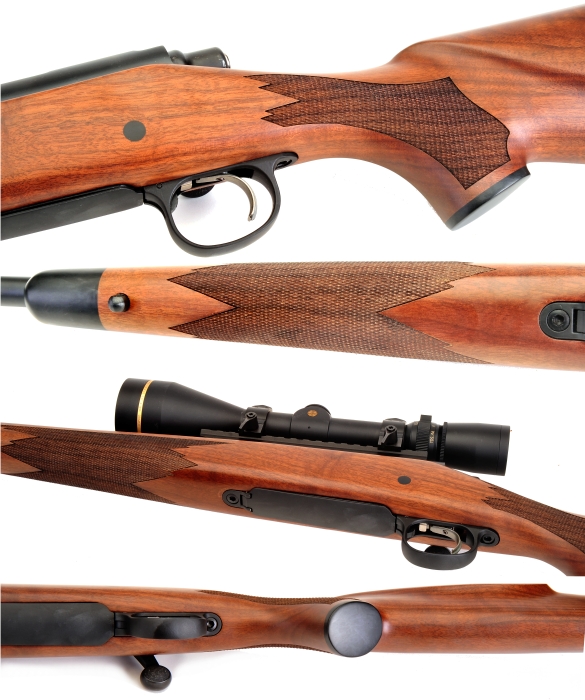
Rails! Rails! Rails!
Let’s face it, rail mounts have taken over the universe. You stick them on a firearm and you can then easily stick anything on the rail; scopes, red dot, weapon light, lasers, metallic sights, night vision equipment, a GPS and, possibly, a baloney and cheese sandwich. We may only need them approximately 2% of the time we use them, but they do look good and they play to the lazy guy in all of us. Sometimes, however, the manufacturer may not have really thought their design through completely, so it is good to pay attention when you begin to bolt on parts. Do you have an example of that, Joe? Sure…
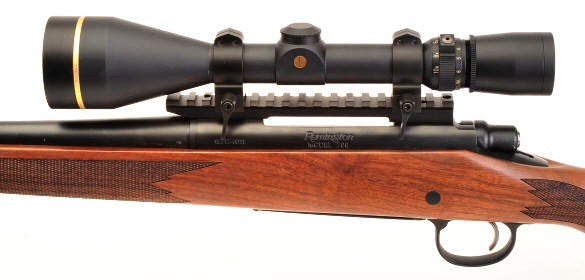
Millet Picatinny rails, like those sold by a number of solid manufacturers for the Remington Model 700, are of the riser variety. Using medium height rings, the rail’s 0.510″ height and 7″ length cause a scope’s objective bell to bump the front of the rail. This interference prevents the scope from being moved aft for proper eye relief and it places even a 50mm objective lens bell 3/4″ above the gun’s barrel. The minimum scope tube length that would allow the bell to clear, properly position for eye relief and place the scope down near the barrel and bore centerline is 9″. Scopes like that are not being made these days. My only point is… I bet you thought I didn’t have one, is that many manufactures make rails for bolt action rifles that are more suitable for an AR flattop and cannot result in a properly mounted scope on a bolt action rifle.
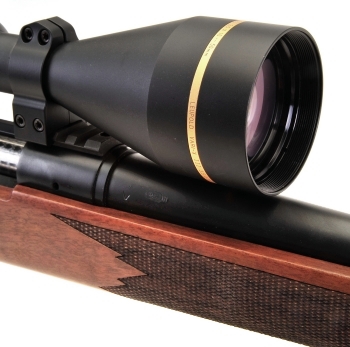
Digging around in the shop scrounge box, AKA “The mystery box” produced a two piece mini rail set of Howa Picatinny bases that also happen to fit the Model 700 Remington. The eyepiece position was right on and the objective bell hugged, but did not touch, the barrel.
The bases are Burris Xtreme Tactical, which are difficult to locate because, for some strange reason, Burris now has a Burris Tactical web site where they hide all of the good products they sell.
A set of Warne bases would have worked as well, except they would not have multiple slots to aid in positioning the scope fore and aft. Medium rings were used as low rings required bending the scope tube and that seemed not like a good idea.
The real 270 Winchester cartridge…

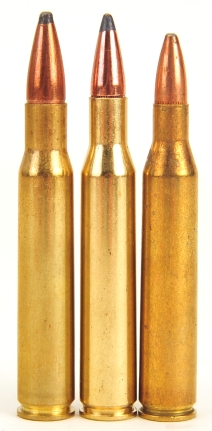 Rather than plagiarize “Cartridges of the World”, and its restated, rehashed and reinterpreted republished information, I will quote the gospel according to Sierra Edition V and say that the 270 Winchester was developed in 1923 and introduced to the public in 1925. After that, virtually all sources go off in divergent directions regarding the round’s application. I do know that Jack O’Connor caused the 270 Winchester to not be my first centerfire rifle by convincing me with his writing that it was a “Western” cartridge and made for the wide open spaces. I was hunting in dense woodland and paying way too much attention to what other people had to say.
Rather than plagiarize “Cartridges of the World”, and its restated, rehashed and reinterpreted republished information, I will quote the gospel according to Sierra Edition V and say that the 270 Winchester was developed in 1923 and introduced to the public in 1925. After that, virtually all sources go off in divergent directions regarding the round’s application. I do know that Jack O’Connor caused the 270 Winchester to not be my first centerfire rifle by convincing me with his writing that it was a “Western” cartridge and made for the wide open spaces. I was hunting in dense woodland and paying way too much attention to what other people had to say.
Life experience tells me the 270 Winchester’s usefulness depends upon bullet types and loads selected. Certainly light enough for varmint hunting, although perhaps a little heavier than required. Certainly hard enough hitting for elk and moose without being marginal. Certainly enough range for antelope and sheep hunting.
Bullet weights from 90 grains to 150 grains are widely available. Recoil is modest in sporting weight rifles and muzzle blast is… typical for a centerfire rifle.
Fired from a seven pound gun, 130 grain to 150 grain loads will generate between 23 and 25 ft/lbs of recoil, or approximately 6 ft/lbs less than a 180 grain 30-06 Springfield load in the same type of firearm or approximately 10 ft/lbs more than a 105 grain 243 Winchester load. The 270 Winchester rates a 15.7 on the Real Guns barrel burner index, shown below in context to other popular rounds.
| Cartridge |
257 Weatherby |
270 Winchester |
30-06 Springfield |
300 WSM |
375 H&H |
| Bullet Diameter | .257 | .270 | .308 | .308 | .375 |
| Barrel Burner Index | 20.9 | 15.7 | 13.3 | 16.8 | 15.7 |
 The 270 Winchester does not have a unique bullet diameter at 0.277″, but it is in the company of only a handful of challengers to its throne. Most notably the venerable 270 Weatherby Magnum and one of the few good short magnums, the 270 WSM – pictured right.
The 270 Winchester does not have a unique bullet diameter at 0.277″, but it is in the company of only a handful of challengers to its throne. Most notably the venerable 270 Weatherby Magnum and one of the few good short magnums, the 270 WSM – pictured right.
| Cartridge | Pressure PSI |
Capacity Grains H2O |
COL “ | Case Length “ |
Bullet Weight Grains |
Nominal Velocity FPS |
| 270 Winchester | 65,000 | 67 | 3.340 | 2.540 | 150 | 2,950 |
| 270 WSM | 63,800 | 79 | 2.860 | 2.090 | 150 | 3,120 |
| 270 Weatherby | 63,800 | 82 | 3.292 | 2.549 | 150 | 3,300 |
So if the 270 Winchester can be beat by these other cartridges, why does the 270 Winchester exist? I think it goes something like this:
Flexible and adequate power from varmints to moose.
Readily available, low cost ammunition.
Lots of firearm choices, low cost to fancy and expensive
Large installed base of firearms
Low cost reloading components
A box of Prvi Partizan 270 Winchester 150 Grain Soft Point ammunition cost approximately $17. White box Winchester value ammunition for the 270 WSM costs approximately $30 and budget priced 270 Weatherby ammunition costs approximately $52. Sixty five factory loads for the 270 Winchester, twenty six for the WSM and twelve for the Weatherby.
The lowest cost 270 Winchester chambered rifle I could locate was a Savage Axis for under $370. The least costly 270 WSM I could find was a… ironically, was a Weatherby Vanguard priced at about $600. The lowest priced .270 Weatherby I could locate was a Weatherby Mark V Synthetic at $975. A premium Remington, like the subject Model 700 CDL rifle, is about a $850 purchase. So the 270 Winchester remains popular and Remington sells a lot of very nice rifles.
For those who like things their way…
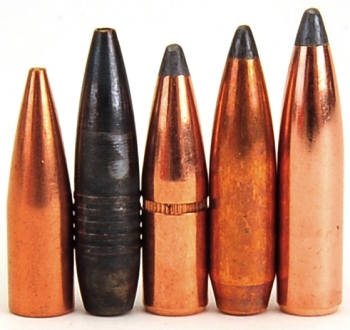 We had some earlier project handload data on the Real Guns site, but this seemed a good time for an update.
We had some earlier project handload data on the Real Guns site, but this seemed a good time for an update.
Left to right – Hornady 110 grain HP, GS Custom 110 grain HV, Hornady 130 grain Interlock, Sierra 140 grain BTSP, and Nosler 150 grain Partition.
The five bullet selection was based upon a cost – performance. criteria. A 90 grain is not represented because, for me, the bullet weight it too low and I’ve not been able to get good accuracy with one. The GS Custom is particularly well suited for use with this cartridge. Its construction holds up well on impact for controlled expansion and the narrow positive driving bands allow higher velocity for use on thin skinned, distant game.
Data and live fire results published in Part II.
Remington Model 700 CDL Classic Deluxe Part I
Remington Model 700 CDL Classic Deluxe Part II

Email Notification